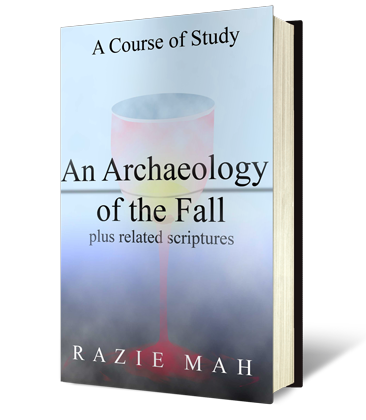Empower Yourself
An Archaeology of the Fall and How to Define the Word "Religion" are among the first truly creative expositions of this unfolding age, described by John Deely in Four Ages of Understanding: The First Postmodern Survey of Philosophy from Ancient Times to the Turn of the Twentieth Century (2001, University of Toronto Press).
The Age of Semiotics has just begun. This is the Age of Signs. Signs exist as triadic relations. They are categorically different than dyadic cause and effect, so familiar to science. Indeed, they encompass dyadic cause and effect.
How can you empower yourself, the capable reader?
You can moderate seminar courses. You can read and discuss.
The following courses are suitable for high school and college students.
How do I access these courses?
First, make sure every student has an electronic tablet.
Second, download the appropriate e-book or e-article from www.smashwords.com. Purchase or photocopy accompanying hard texts.
Smashwords is a website that transforms word documents into tablet formats. Each tablet will favor one format over others. The advantage of this site is that is accepts simple graphics. Simple graphics are essential for presenting the category-based nested form.
How do I proceed?
When in the smashwords website, search for author Razie Mah. Many publications will appear. Look in the description of any work and find the link: Series. Click on Series. All the works in the named course will appear.
Do not be intimidated. Long courses should take 12 to 13 weeks. Short courses should take 6 weeks.
Available courses follow. Series titles are in bold:
A Course of Study: An Archaeology of the Fall
This course introduces the groundbreaking concept of the first singularity within a contemporary drama. The arrangement of the book reflects Semitic textual structure. The plotline and discussions reflect Greek textual structure. Short versions of the various hypotheses are found in the series: Crystallizations of the Fall.
Related scriptures include the Bible (Genesis and Paul's Letter to the Romans) and the Qur'an (specifically, sura 5). A three part Instructor's Guide goes with the course. The Instructor's Guide breaks the course into 36 lessons (with three optional lessons at the end).
How to Define the Word "Religion" and Related Primers
This course introduces and applies the category-based nested form to foundational questions about the term "religion". The category-based nested form is synthetic, not analytic. Analysis often attributes causality to isolated terms belonging to a holistic framework.
These methods present an alternative to psychology and sociology, disciplines that currently ignore one another and are accessories to the current Zeitgeist.
What is psychology if not mindfulness of society? What is society if not the joining together of minds?
First read How to Define the Word "Religion". Then, read the first 10 primers.
Implicit and Explicit Abstraction
This course is an exercise in postmodern scholasticism. Novotny's book and Deely's book are read in tandem with comments.
Not surprisingly, both books cover different aspects of Baroque scholasticism, which flourished at the same time as Early Modernism. The Early Moderns opened the Age of Ideas, which is now coming to a close. The Baroque scholastics marked the end of the Latin Age, discussing ideas that - over three hundred years later - apply to postmodern topics, including the natures of mind-dependent being, abstraction and sign.
Begin with Comments on Daniel Novonty's Book (2013) Ens Rationis: From Suarez to Caramuel, along with Novotny's text. Then, read Primer #11 (on Implicit and Explicit Abstraction). Finally, read Comments on John Deely's Book (1994) New Beginnings, along with Deely's text.
A Short Course: How to Define the Word "Gnosticism"
Peter Burfeind's excellent reading of American culture and religion is examined in tandem with the commentary. The text and comments complement one another. Gnosticism is one of Christianity's oldest heresies. It may be much older. So why has it returned with a vengeance? Burfeind tells the story. The comments explore the logic.
Read Comments on Peter Burfeind's Book (2014) Gnostic America, along with Burfiend's text. Instructions are in the comments.

